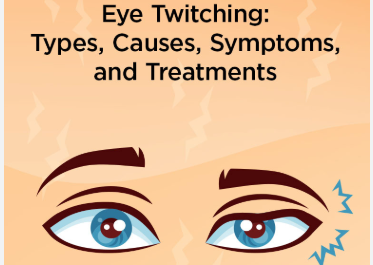Introduction
Fibromyalgia is a chronic condition that causes widespread pain, fatigue, and various systemic symptoms. While many people associate fibromyalgia with muscle pain and cognitive issues, puffy eyes are another lesser-known yet common symptom.
People with fibromyalgia often wake up with swollen, puffy eyes, which can persist throughout the day. This condition is not just a cosmetic issue—it can be a sign of inflammation, fluid retention, or poor sleep quality associated with fibromyalgia.
In this article, we explore the causes, effects, and management strategies for puffy eyes in fibromyalgia.
1. What Do Puffy Eyes Look Like in Fibromyalgia?
People with fibromyalgia may notice:
✔ Swollen or inflamed eyelids, especially in the morning.
✔ Dark circles or bags under the eyes.
✔ Redness or irritation around the eyes.
✔ Fluid retention causing a puffy appearance.
✔ Eyelids that feel heavy or droopy.
✔ Sensitivity and discomfort around the eyes.
The severity of puffiness can vary daily and may worsen during fibromyalgia flares.
2. What Causes Puffy Eyes in Fibromyalgia?
Puffy eyes in fibromyalgia can result from multiple factors, including inflammation, poor circulation, sleep disturbances, and medication side effects.
2.1 Inflammation and Fluid Retention
✔ Fibromyalgia is linked to systemic inflammation, which can cause fluid buildup around the eyes.
✔ Swelling may be worse in the morning due to fluid accumulating overnight.
✔ Inflammation can also lead to tenderness and redness around the eyes.
2.2 Poor Sleep Quality (Non-Restorative Sleep)
✔ Sleep disturbances are a hallmark of fibromyalgia, leading to poor overnight recovery.
✔ Lack of deep sleep can cause fluid retention, dark circles, and puffiness.
✔ Waking up frequently during the night prevents proper lymphatic drainage, leading to morning eye swelling.
2.3 Dehydration and Electrolyte Imbalance
✔ Many people with fibromyalgia experience chronic dehydration, which can contribute to fluid retention and puffiness.
✔ An imbalance in electrolytes (sodium, potassium, and magnesium) can affect the body’s ability to regulate fluids properly.
2.4 Allergies and Sinus Issues
✔ Many fibromyalgia sufferers also have allergies or sinus congestion, which can lead to eye puffiness.
✔ Allergic reactions trigger histamine release, causing swelling, irritation, and watery eyes.
2.5 Medication Side Effects
✔ Antidepressants, muscle relaxants, and pain medications prescribed for fibromyalgia can cause fluid retention and eye swelling.
✔ Some medications disrupt sleep cycles, worsening morning puffiness.
2.6 Poor Lymphatic Drainage
✔ Fibromyalgia is associated with lymphatic system dysfunction, meaning the body struggles to eliminate waste and excess fluids.
✔ This can lead to swelling around the eyes and face.
2.7 Hormonal Imbalances
✔ Many people with fibromyalgia also have thyroid dysfunction or adrenal fatigue, which can cause fluid retention and puffiness.
✔ Cortisol imbalances (stress hormone) can contribute to eye swelling and fatigue.
3. Effects of Puffy Eyes on Daily Life
Puffy eyes are more than just an aesthetic issue—they can affect comfort, vision, and self-confidence.
3.1 Visual Discomfort
✔ Swollen eyelids can make it harder to open the eyes fully, leading to blurry vision.
✔ Dry eyes may accompany puffiness, increasing irritation and sensitivity to light.
3.2 Increased Fatigue and Brain Fog
✔ Puffy eyes often make fatigue feel worse, as they create a tired, heavy sensation around the eyes.
✔ This can worsen brain fog, which is already common in fibromyalgia.
3.3 Self-Consciousness and Emotional Impact
✔ Persistent puffy eyes can affect self-esteem, making people feel more exhausted and unwell.
✔ The appearance of chronic fatigue may lead to social withdrawal or frustration.
4. How to Reduce Puffy Eyes in Fibromyalgia
Although puffy eyes in fibromyalgia are common, they can be managed with lifestyle changes, home remedies, and medical support.
4.1 Improve Sleep Quality
✔ Maintain a consistent sleep schedule to promote deeper, more restorative sleep.
✔ Use a contoured sleep mask to reduce eye swelling overnight.
✔ Elevate your head slightly with a pillow to prevent fluid buildup in the face and eyes.
4.2 Stay Hydrated and Balance Electrolytes
✔ Drink plenty of water throughout the day to prevent dehydration.
✔ Consume electrolyte-rich foods such as bananas, avocados, and leafy greens to regulate fluid balance.
4.3 Use Cold Compresses or Eye Masks
✔ Apply cold tea bags (green or chamomile), cucumber slices, or chilled spoons over closed eyes for 10-15 minutes to reduce swelling.
✔ Try a gel-based cooling eye mask to soothe inflammation.
4.4 Reduce Inflammation Through Diet
✔ Avoid processed foods high in salt and sugar, which contribute to fluid retention.
✔ Eat anti-inflammatory foods such as turmeric, ginger, fatty fish, and berries.
4.5 Manage Allergies and Sinus Congestion
✔ Use antihistamines or natural allergy remedies to reduce allergic reactions.
✔ Perform steam inhalation with essential oils (eucalyptus, peppermint) to clear sinuses.
4.6 Lymphatic Drainage Massage
✔ Gently massage the under-eye area and temples to stimulate lymphatic drainage.
✔ Light tapping or rolling a jade roller or gua sha stone can improve circulation and reduce swelling.
4.7 Limit Screen Time and Reduce Eye Strain
✔ Follow the 20-20-20 rule: Every 20 minutes, look away from the screen at something 20 feet away for 20 seconds.
✔ Reduce exposure to blue light at night to promote better sleep.
4.8 Check Medications
✔ If certain medications cause fluid retention, speak to a doctor about possible alternatives or dosage adjustments.
5. When to See a Doctor
If puffy eyes persist despite lifestyle changes, seek medical advice.
Seek medical attention if you experience:
✔ Severe swelling that does not go away.
✔ Pain, redness, or vision disturbances.
✔ Puffiness accompanied by excessive fatigue, weight gain, or hormonal issues (possible thyroid dysfunction).
✔ Persistent dark circles and swelling unrelated to sleep or hydration.
A rheumatologist, neurologist, or endocrinologist may help identify whether underlying conditions like autoimmune disorders or thyroid imbalances are contributing to puffy eyes.
6. Conclusion: Managing Puffy Eyes in Fibromyalgia
Puffy eyes are a common but overlooked symptom of fibromyalgia, often linked to inflammation, poor sleep, fluid retention, and medication side effects.
By making simple lifestyle changes such as improving sleep, staying hydrated, using cold compresses, and managing allergies, individuals with fibromyalgia can reduce eye puffiness and feel more refreshed.
If puffiness persists, medical evaluation can help rule out underlying conditions, ensuring a comprehensive treatment plan.
Would you like personalized skincare or supplement recommendations for managing fibromyalgia-related puffy eyes?

Click Here to Visit the Store and find Much More….
For More Information Related to Fibromyalgia Visit below sites:
References:
Fibromyalgia Contact Us Directly
Click here to Contact us Directly on Inbox
Official Fibromyalgia Blogs
Click here to Get the latest Chronic illness Updates
Fibromyalgia Stores


